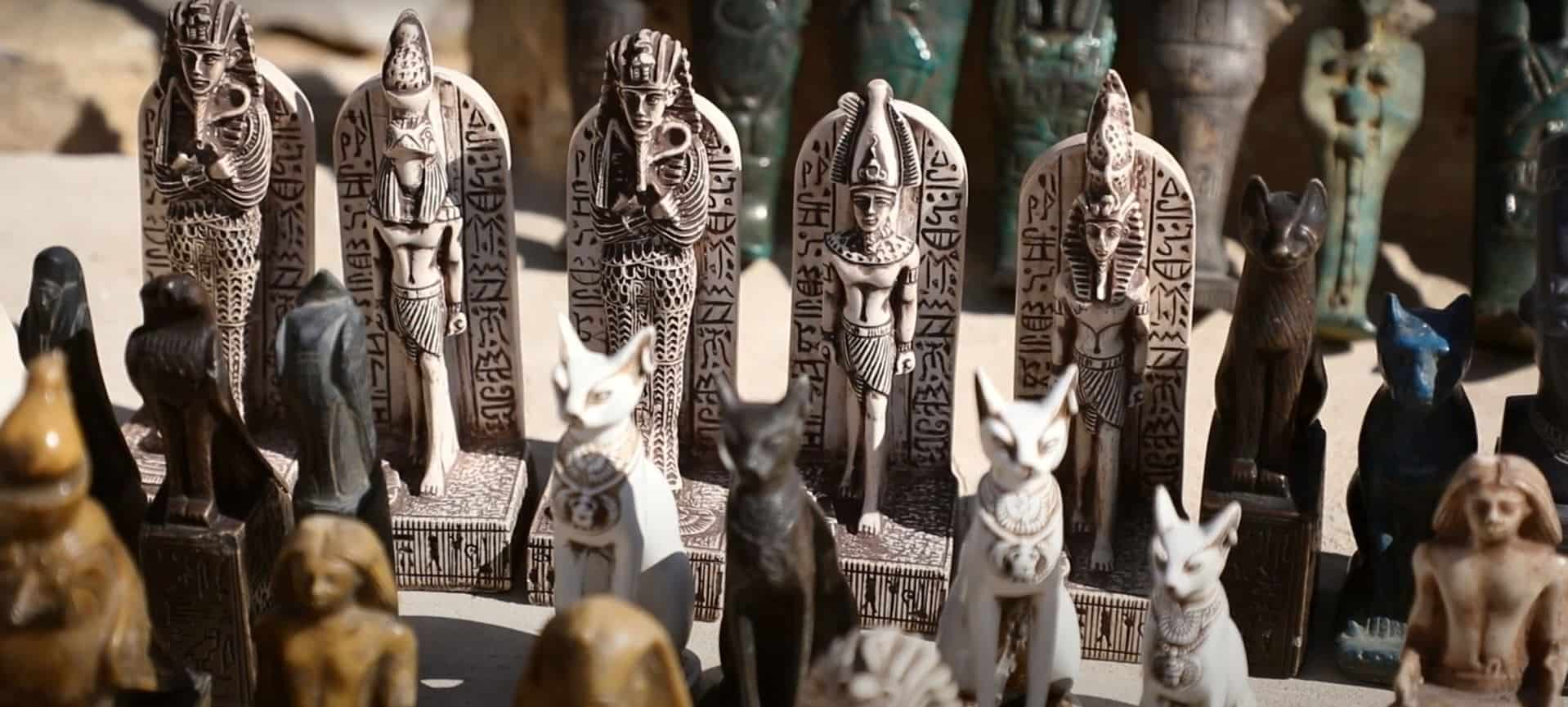A Trip To the Wonderful Saqqara – Egypt

Updated On: April 18, 2024 by Ahmed Samir
Not many have heard of Saqqara. Nestled on the eastern bank of the Nile River in southern Egypt, Luxor stands as a living testament to the ancient splendour of this remarkable civilization. Often referred to as “The World’s Greatest Open-Air Museum,” Luxor is a city steeped in history, offering travellers a captivating journey through time. This article will explore the best time to visit Luxor, delve into its rich history, and address frequently asked questions to help you plan an unforgettable trip to this archaeological wonder.
Luxor’s unique blend of breathtaking monuments, timeless artefacts, and vibrant cultural scenes makes it an ideal destination for history enthusiasts and adventure seekers. From exploring the majestic temples of Karnak and Luxor to witnessing the grandeur of the Valley of the Kings and the Valley of the Queens, every corner of Luxor promises an enchanting glimpse into the past. Whether you’re a first-time visitor or a returning admirer, this guide aims to enhance your experience by providing essential information on the best visiting seasons, historical insights, and practical travel tips for this awe-inspiring city.
Unlocking Egypt’s Wonders: The Optimal Time to Visit
The best time to visit Egypt is during the fall and spring, which encompass the periods from September to November and March to May, respectively. During these seasons, Egypt enjoys milder and more comfortable temperatures, making it the perfect time for tourists to explore its rich cultural and historical attractions.
The scorching summer heat of June to August can be challenging for outdoor activities, while the winter months of December to February can still be pleasant for sightseeing but may bring larger crowds of tourists. Therefore, plan your trip during the warm fall or spring months to make the most of your visit and enjoy Egypt’s iconic landmarks, ancient ruins, and vibrant cities.
History of Saqqara
Saqqara’s historical significance is deeply intertwined with the development of pyramid construction and the evolution of burial practices in ancient Egypt. Here are some critical historical highlights:
- The Step Pyramid of Djoser: Saqqara is renowned for the Step Pyramid of Djoser, which was built during the 27th century BCE. Designed by the famous architect Imhotep, this pyramid is considered the earliest colossal stone building and marked a pivotal shift from mastaba tombs to pyramid structures.
- The Necropolis: Saqqara served as a vast burial ground for Egypt’s elite during the Old Kingdom and beyond. The site features numerous mastaba tombs, smaller pyramids, and intricate hieroglyphics, providing insights into ancient Egyptian beliefs and customs.
- The Pyramid Texts: Inside the pyramids and tombs of Saqqara, you can find some of the earliest known religious texts, known as the Pyramid Texts. These texts offer a glimpse into the spiritual beliefs and rituals of the time.
- Restoration Efforts: Ongoing restoration efforts by archaeologists have preserved and unearthed many treasures at Saqqara, shedding new light on ancient Egypt’s history.
Saqqara: The Birthplace of the Pyramid
Saqqara, also spelt Sakkara or Saccara, is an ancient cemetery approximately 30 kilometres south of Cairo, Egypt. It holds immense historical importance as it served as the burial ground for Memphis, the ancient capital of Egypt during the Old Kingdom period.
The centrepiece of Saqqara is the Step Pyramid of Djoser, constructed during the 27th century BCE, making it one of the earliest stone structures built by human hands. This pyramid marks a groundbreaking architectural evolution as it transitioned from the traditional mastaba-style tombs to the iconic pyramid shape that would become synonymous with ancient Egypt.
Designed by the brilliant architect Imhotep, the Step Pyramid is a testament to ancient Egyptian engineering prowess. It comprises six terraced layers, or steps, and reaches a height of approximately 62 meters. The complex surrounding the pyramid includes temples, courtyards, and galleries, providing valuable insights into the religious and cultural practices of the time.
Beyond the Step Pyramid, Saqqara boasts a multitude of mastaba tombs, smaller pyramids, and chapels, each adorned with intricate hieroglyphics and depictions of daily life in ancient Egypt. In these tombs, some of the earliest known religious texts, the Pyramid Texts, were discovered, providing insight into old Egyptian beliefs regarding the afterlife.
In recent years, excavation and restoration efforts have uncovered additional treasures at Saqqara, adding to its allure as a must-visit archaeological site in Egypt. These discoveries have included well-preserved burial chambers, statues, and various artefacts that shed light on the lives and beliefs of ancient Egyptians.
For travellers and history enthusiasts, a visit to Saqqara offers an opportunity to step back in time and witness the birth of pyramid construction, the evolution of burial practices, and the enduring legacy of ancient Egyptian civilization. Its historical significance and architectural marvels make Saqqara a captivating destination for those eager to explore the cradle of pyramids and unravel the mysteries of the past.
Exploring Saqqara’s Enchanting Environs: Nearby Attractions in Egypt
While Saqqara is a fascinating destination in its own right, there are several nearby attractions worth exploring:
- Giza Pyramids: Located just a short drive from Saqqara, the Giza Plateau is home to some of the world’s most iconic pyramids, including the Great Pyramid of Khufu, the Pyramid of Khafre, the Pyramid of Menkaure, and the enigmatic Sphinx. These monumental structures are a testament to ancient engineering prowess and continue to fascinate visitors from around the globe.
- Memphis: The ancient capital of Egypt, Memphis, lies near Saqqara. Here, you can discover colossal statues of Ramses II, including the famous Memphis Sphinx. The open-air Memphis Museum provides a glimpse into the city’s history with various artefacts and inscriptions.
- Dahshur: Approximately 10 kilometres south of Saqqara, Dahshur is another pyramid-rich area featuring notable structures such as the Bent Pyramid and the Red Pyramid. These pyramids offer a quieter and less crowded alternative to the famous pyramids at Giza, allowing for a more intimate exploration.
- Cairo: The bustling Egyptian capital, Cairo, is just a short drive from Saqqara. Cairo is a treasure trove of cultural and historical wonders, including the Egyptian Museum, which houses a vast collection of ancient artefacts, and the vibrant Khan El Khalili market, where you can immerse yourself in the sights and sounds of Egyptian bazaars.
- Coptic Cairo: Located within Cairo, Coptic Cairo is a historic neighbourhood known for its Christian heritage. Here, you can visit ancient Coptic churches, including the Hanging Church and the Church of St. Sergius and Bacchus, offering insights into Egypt’s Christian history.
- Islamic Cairo: This district in the city’s heart boasts stunning Islamic architecture, including the historic mosques of Al-Azhar and Sultan Hassan. Wandering through the labyrinthine streets of Islamic Cairo, you can explore centuries-old markets, such as the Khan El Khalili bazaar.
- The Egyptian Antiquities Museum: Also situated in Cairo, this world-renowned museum houses an extensive collection of ancient Egyptian artefacts, including the treasures of Tutankhamun. It provides an invaluable opportunity to delve deeper into Egypt’s illustrious history.
- Old Cairo Gates: Explore the historic gates of Old Cairo, such as Bab Zuweila and Bab el-Futuh, which offer picturesque views and a glimpse into the city’s medieval past.
- Al-Azhar Park: Located in the heart of Cairo, this beautifully landscaped park provides a serene escape from the city’s hustle and bustle. Enjoy lush gardens, fountains, and breathtaking views of historic Cairo from here.
These nearby attractions complement the visit to Saqqara, offering a diverse range of historical, cultural, and architectural experiences that showcase the rich tapestry of Egypt’s past and present. Whether you’re intrigued by ancient pyramids, religious heritage, or bustling urban life, this region has something to offer every traveller.
Conclusion
A trip to Saqqara, Egypt, is a journey into the heart of ancient Egyptian civilization, where the evolution of pyramid construction and burial practices comes to life. By choosing the best time to visit, understanding its rich history, exploring nearby attractions, and addressing common questions, you can embark on an enlightening and unforgettable adventure through the cradle of the pyramids. Experience the magic of Saqqara and let its timeless treasures transport you to a bygone era of grandeur and mystique.
FAQs
Can I enter the pyramids at Saqqara?
- Some of the pyramids at Saqqara, like the Pyramid of Djoser, allow visitors to enter. However, entrance to the inner chambers may be restricted or require additional fees.
How do I get to Saqqara from Cairo?
- Saqqara is easily accessible by car or taxi from Cairo, typically taking about 30 minutes. Alternatively, guided tours are available that include transportation to and from Saqqara.
Are there any restrictions on photography at Saqqara?
- Photography is generally allowed at Saqqara, but some areas within tombs and museums may have restrictions. It’s essential to respect any signage or guidelines authorities provide and avoid using flash photography in sensitive areas.
Can I hire a local guide at Saqqara, and how do I find one?
- Yes, you can often find local guides near the entrance to Saqqara who offer their services. Negotiating prices and clarifying the tour’s scope before starting is recommended. Alternatively, you can arrange for a guided tour through a reputable travel agency in advance.
Can I purchase souvenirs or local crafts near Saqqara and nearby attractions?
- You can often find souvenir shops and local craft stalls near major historical sites. These offer a range of items, including traditional Egyptian crafts, jewellery, clothing, and replica artefacts.






